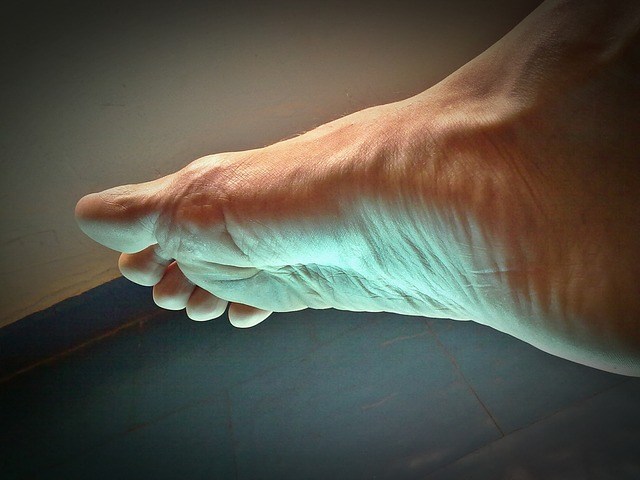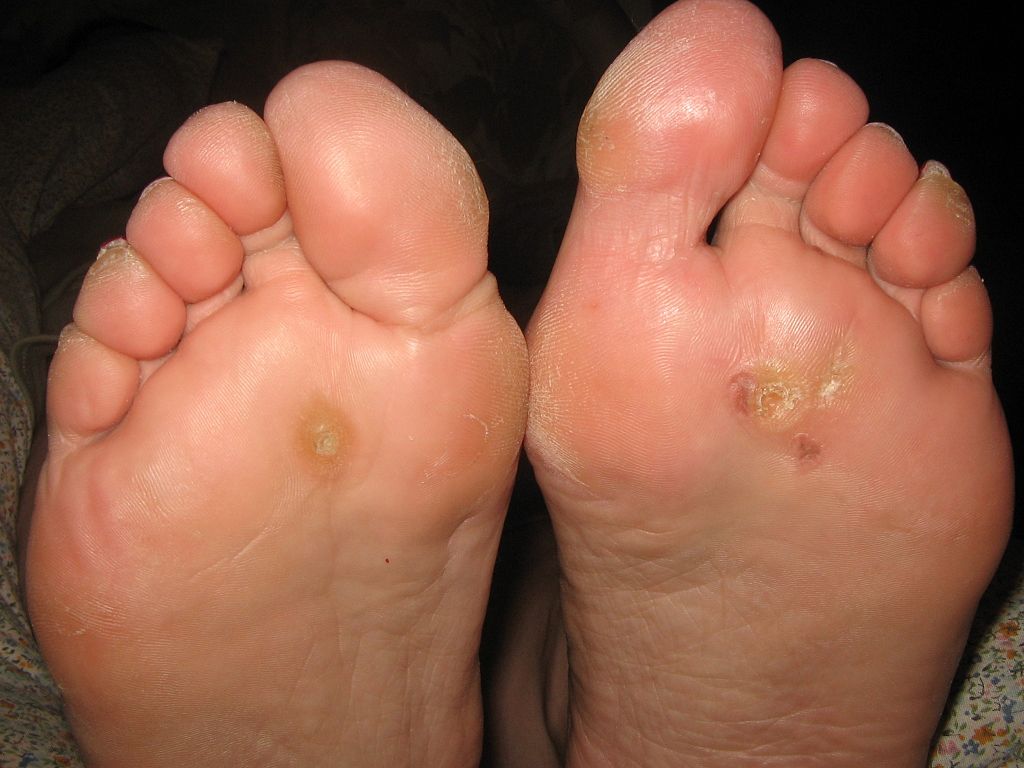Simply put, a plantar wart is an infection on the bottom of your foot that manifests in hard, calloused-covered warts.
The term plantar is most often used for plantar fasciitis, an inflammation of the tendon at the bottom of your foot named the plantar fascia, which goes from your heel to connect to your metatarsals – or base of the toe.

As such, the area of the plantar fascia is where plantar warts are most typically going to appear.
They’re located on the weight-bearing parts of your feet, such as the heel, the ball of your feet, and the bottom of toes, too.
Contents
What Is a Plantar Wart?
Plantar warts are benign, meaning they’re not a danger to your overall health, but that doesn’t mean they can’t sometimes be painful to walk on.
This infection is one form of the human papillomavirus, otherwise known as HPV.
Don’t fret – plantar warts aren’t the kind of HPV you’ve been taught to fear in the sex-education part of your schooling.
There are about 120 different known types of HPV and each different kind tends to only affect one specific area of the body.
Your plantar wart might result in another wart on the bottom of your foot, but it won’t spread to your hands or your genitals.
Just as well, plantar warts are not caused by a type of HPV that is known for increasing the risks of cancer, such as mouth or genital HPV are sometimes known to.
At-risk groups for having plantar warts include those with diabetes or who have a personal or family history of skin cancer.
Diabetics should consult with their doctor if they believe they have plantar warts.
This is due to a risk of a small obstruction in blood flow (as the warts do feed off blood capillaries) and possible nerve damage, as a result of not treating the plantar wart or attempting home remedies.
Plantar Wart Causes
As said earlier, plantar warts are a result of a few specific types of HPV, but this can still leave one wondering where they might have contracted it.
It’s not as if your foot comes into contact with other feet. However, walking in areas – especially warm, humid ones – that receive traffic from bare feet are going to be breeding grounds for the virus.

The type of HPV that is responsible for plantar warts can survive for months without a host so long as it is in these humid areas.
Such as with other forms of HPV, it is only contracted through physical contact. The chance of contracting it is substantially higher if you have any cuts or open sores on the bottom of your feet in areas where the virus is located.
This is why it is encouraged you wear sandals, flip-flops, or other water-safe foot coverings in locker rooms, public showers, or at public swimming pools.
It’s also a big factor in why children are more likely to suffer from the occasional bout of plantar warts as they’re more likely to run around inside and outside barefooted.
What Does a Plantar Wart Look Like?
Now, you may wonder what does a plantar wart look like? Due to the location of the wart, it does not resemble the common mental image surrounded by warts.
These warts grow inward as a result of the pressure exerted on it by standing, walking, or running.
Sometimes, but not always, there are little black dots on the warts. These are simply blood capillaries. If yours don’t show these, that doesn’t mean they’re not plantar warts. Sometimes the appearance simply looks like a weird, small callous or a patch of white-ish skin.
As it is a virus, there are some cases in which untreated plantar warts will grow larger in diameter and bump up against each other to create a patch of these flat warts.

These are still not considered dangerous to your overall health, but the formation of mosaic warts may increase the chance of pushing a pressure point when you walk.
If none of the descriptions match your ailment, it is possible that it could be something other than a plantar wart and should be checked by a professional.
When to Go to the Doctor
Plantar warts are considered a common and non-serious ailment that does not require intervention by a medical professional.
Most cases of plantar warts will resolve themselves as your immune system combats the virus. If it persists, there are forms of home common remedies to treat the warts.
This can include essential oils, salicylic acid, the use of pumice stone and vinegar-water solutions, over the counter cryotherapy kits, and so on.
If you treat your wart with approved home remedies and the plantar wart(s) don’t start to diminish or go away, or if the number of warts actually increases during this period, then see your doctor for possible alternative treatments, such as (but not limited to) professionally applied cryotherapy or surgical removal.
Do not attempt to treat a plantar wart on your own if you are diabetic or have a history of skin cancer.
Do you have any tips for treating plantar warts?

